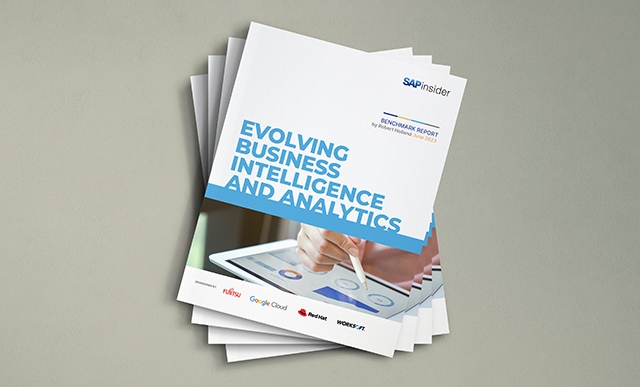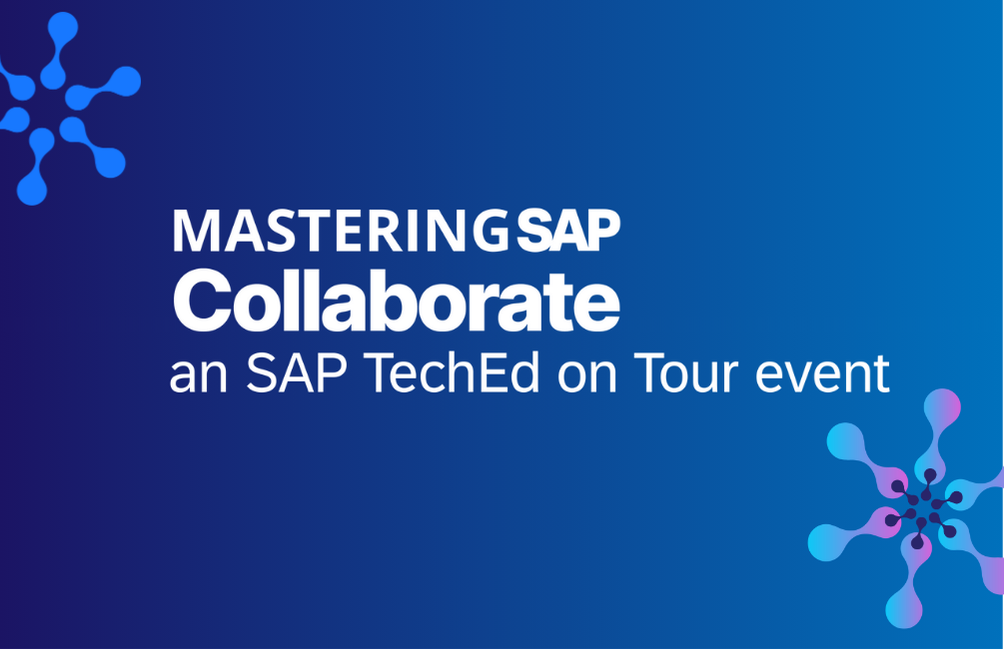Live from SAPinsider Studio: Houston Independent School District’s BI Journey
Jehangir Khan, Senior BI Architect, Discusses BusinessObjects Use
Jehangir Khan, Senior BI Architect, Houston Independent School District, joins SAPinsider Studio at the 2016 BI-HANA event to discuss the district’s evolving use of the SAP BusinessObjects BI suite. Topics of this discussion include how the district is driving better decisions with tools such as Lumira, Design Studio, and Web Intelligence.
This is an edited version of the transcript:
Ken Murphy, SAPinsider: Hi this is Ken Murphy with SAPinsider. I am at the SAPinsider BI-HANA-IoT event in Las Vegas. Today I am pleased to be joined by Jehangir Khan, Senior BI Architect for the Houston Independent School District. Jehangir, thanks for being with us.
Explore related questions
Jehangir Khan, Houston Independent School District: Thank you.
Ken: I was hoping to start if you could tell the audience a little bit about the Houston Independent School District?
Jehangir: I represent Houston Independent School District. As you all know, Houston Independent School District is the seventh-largest school district in the United States and the No. school district in the state of Texas. We have more than 212,000 students, more than 25,000 employees, more than $1.5 billion in the General Fund budget. So even though people think of us as a school district, the amount of operations we do from finance, to procurement, to warehouse management, feeding our children – is humongous. And as far as what we’ve done – we have SAP which we implemented back in 1998. We have SRM, now we’re going through two major projects. The first project is we’re re-implementing SAP with New GL, new chart of accounts. And also we’re going through in the process of migrating PeopleSoft into SAP HCM. These are the current huge projects going on in the school district; the re-implementation of SAP with New GL, and PeopleSoft migration into SAP HCM, BusinessObjects implementation, BI reporting, re-implementation of existing data and the new data, SRM, and SuccessFactors as well.
Ken: Quite a lot. Which BusinessObjects tools are you implementing?
Jehangir: So BusinessObjects, in the whole suite we are implementing the whole BusinessObjects landscape. So the tools which we’re focusing on right now are Web Intelligence, Crystal Reports, Design Studio, Xcelsius, and Lumira. All these tools which we have right now we’re deciding which is the best fit for the school district. We have for designs for creating a dashboard we have three different tools now: Xcelsius, Design Studio, and Lumira. So we’re in the process of deciding which tool going forward is the best choice for our audience.
Ken: How do you make that decision? First, how many users is this touching?
Jehangir: Users, we have more than 2,500 active SAP users. The SAP BI users also using the same licensing, but on a daily basis people who are consuming BI reports are actually to 80-100 concurrent users. So for your question how do we decide which tools to use – for that we engage with the business. But before we engage with the business, we also are training IT on the tools. If you look at the roadmap now, it’s changing. SAP BusinessObjects is not the same as it was two years ago. You have different iterations, different product enhancements, so what we’re doing is we’re making sure we do our homework and know what products we have, what functionality the products have, and how we communicate that to the users, and how they adopt. That’s why we have seminars, workshops, training sessions, and we’re classifying them as for simple users, power users, end users. The bottom line is that we’re trying to engage the business.
Ken: How then has the reporting landscape at Houston Schools changed or evolved in line with that SAP roadmap? Things such as self-service reporting, or mobility?
Jehangir: Back then people were consuming through BEx Analyzer. And people were using the simple web template which came in the form of BEx. But now for example we have WebI; so what we did with WebI we have classified people such as power users who can use this tool for ad hoc reporting; they can slice and dice the data, they can create quick graphical representation of the data. So back then, I never had that tool to give them. For example, Lumira – Lumira is a good tool for self-service. So now if they have the data they can visualize the data and they can create the charts, they can create the models they want to see, they can publish their own storybooks. Back then we never had self-service tools, so it’s a big change. To answer your question, yes we do have that but we are also focusing on training the people and letting them know how these tools can help them. The biggest challenge we’re facing right now is communicating with the users and picking and choosing from them who can represent the business and work with IT. Because we want to close the gap; back in the day it was all IT. Now, with a self-service model coming in it’s not just about IT it’s about business getting involved with IT and vice-versa.
Ken: What tangible benefits or results have you seen toward more of a shift toward a business user in the district?
Jehangir: What I’ve seen is now people understand the data better. Now they’re seeing anomalies in the data rather than depending on me broadcasting a report. Now, since they have access to the data and access to the tools which can slice and dice the data and show them so what I’m seeing is that now they’re becoming more and more aware of their own data and that is helping us to make better decisions. They know where the problems are coming from; they’re leveraging these tools to see the problems they have, and once they have the problems they’re addressing the problems to different and other departments. For example, if there’s a problem with procurement data (before) they had no idea what the problem was because they’re not looking at the data, they never had the tool to look at the data at the data level. Now with these tools they’re seeing the problem and BI is helping them look at and diagnose the problem and they’re going back to their respective departments to fix the problem at the source. There’s a lot of data ownership that’s been put in the hands of the user community and at the end of the day we don’t own the data, it’s the business who owns data.
Ken: And it sounds like the success will feed off itself as they see these real, tangible benefits are occurring it will lead to even more self-service.
Jehangir: And for example when we roll out Lumira we have a lot of KPIs, if you go to procurement, finance, GL, they have their own KPIs, so back in the day yes they were leveraging BEx reports, they’re using BW, but they never had a tool for self-service dashboards. So if you go to the main room in procurement, they have a room filled with Excel charts that they take BW data, dump it into Excel and then they’re creating charts on Excel which defeats the purpose. Yes, it’s self-service in a way, but we want to make sure we automate the whole process, so with these new tools now they’re using these tools and leveraging the data at the source level through BW. So now what I’ve seen is they have power in their hands, they have the data, they have the tools, basic KPIs which each department needs for their quarterly or monthly reports.
Ken: We spoke a year ago at this event, and at the time the district was starting to explore SAP HANA in various capacities. I think you’d mentioned a proof of concept. If you can just take us up-to-date on where the district is in regards to HANA projects?
Jehangir: So, the challenge is we’re in the process of re-implementing SAP. We’re in the process of migrating PeopleSoft into HCM. These two projects are costing us quite a substantial amount of money. So right now even though the management, when I talk to the controller or assistant controller, and the CFO, they’ve been introduced to HANA and S/4HANA, but at this point it’s not in the roadmap as of now because the problem is that we need to make sure these two projects are successful. Once these projects are successful – and we have a July 1 go-live date for these projects – after these projects then we will have a roadmap. And in the roadmap they know that’s where HANA is going. That’s where they want HANA, but it’s a challenge first of all with the money we’re spending on the current project and we want to make sure that’s successful. Once that’s done we’ll explore the opportunities of HANA.
Ken: Jehangir, thank you for joining us today.
Jehangir: Thank you.








